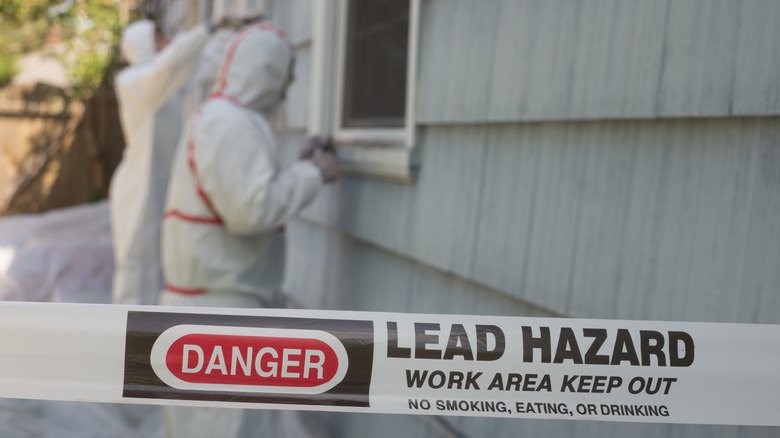The Most Important Thing To Look For If Your House Was Built Before 1978
Buying an older house certainly has its benefits — lower pricing, quality construction, unique touches — but older homes also come with their fair share of issues as well. According to the National Association of Home Builders, over half of the homes still standing in the United States were built before 1980, meaning you'll likely run into a few issues if your home hasn't been frequently updated in the last 40 or so years.
As technology, research, and access to different building materials evolves through the decades, our homes have been changing, too. If you're planning to purchase or already live in an older home, it's important to do some research to determine if anything needs to be changed to keep you and your family safe. Dangers like faulty wiring, cracked foundations, and hazardous materials can lead to bigger problems down the line, but there's one particular thing you should take extra care to look out for if your home predates 1978.
Lead paint in older homes
Nowadays, lead is understood to be a hazardous substance, but it was frequently used as an additive in paint until it was banned by the federal government in 1978 (via the Centers for Disease Control and Prevention). Despite lead paint no longer making its way to shelves, it would've been impossible for the government to individually remove and replace the paint in every home. Because of this, many homes built before 1978 still have lead paint on their walls, even if it's been covered by something less hazardous.
Over time, small chips and dust from the paint can make their way into the air, especially if there are any peeling spots or renovations going on. Breathing in these particles can be harmful, especially to children and pregnant people, and has been shown to cause damage to the brain and nerves, slowed development, and learning problems. Because of this, it's a good idea to test your home's walls for lead levels and take a blood test to determine if you or your family have been exposed, especially when living in an older home.
What to do if you find lead in your home
If, after having your home assessed by a qualified professional, you find lead in your paint, you should start by minimizing your family's risk. According to the CDC, you should block off any high-risk spots that have peeling paint or active renovations, and make sure you and your family frequently wash your hands if you come into contact with dust. The ideal situation is obviously no lead, but until you find someone to renovate, containing the problem is your best option.
Next, you'll want to talk over your options with an Environmental Protection Agency-certified contractor. Per GoodRx, the process of lead paint abatement will likely be expensive — about $15,000 for a 2,000 square foot house — but this cost depends on the size of your home, the removal method, and where you live. Lead paint abatement is pricey, but by hiring qualified experts, you can be sure that you and your family remain safe and healthy throughout the process.


